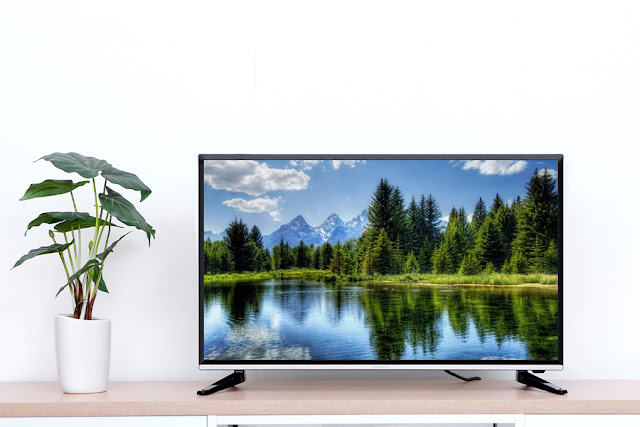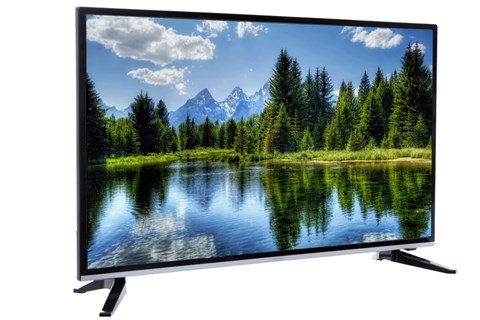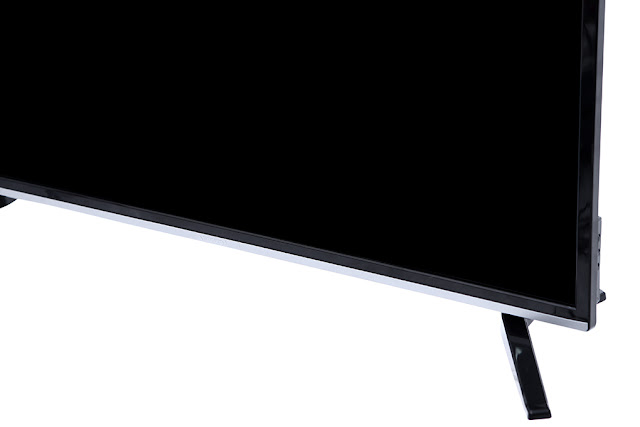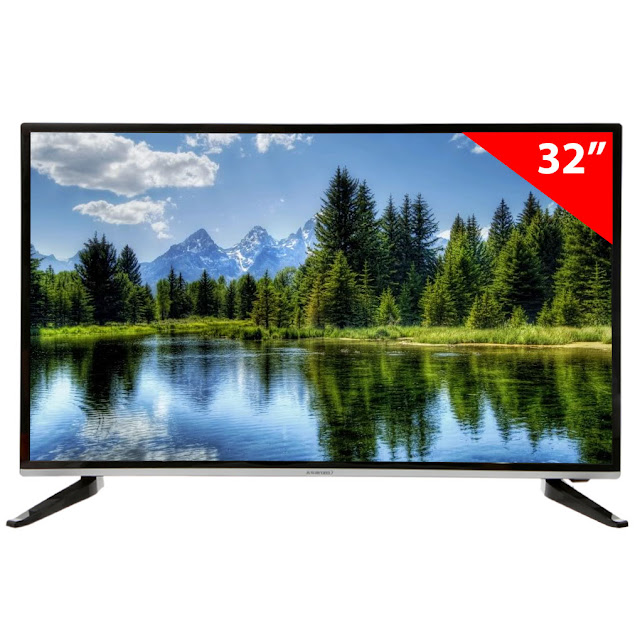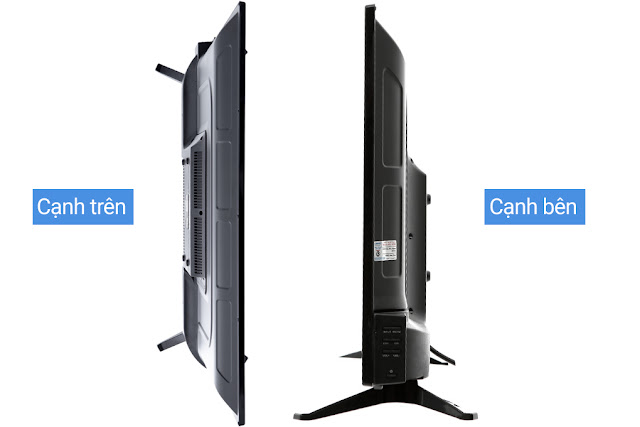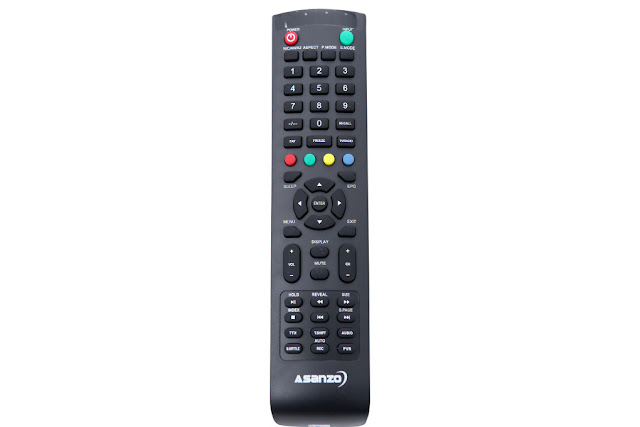[giaban]3,499,000 ₫[/giaban][giacu]
[tomtat]
- Bảo hành: 24 tháng
- Địa chỉ: 35A Nguyễn Hoàng Tôn, Hà Nội
- Vận chuyển: Miễn phí nội thành
- Liên hệ: 0974.812.482 (Mr Nhất) - 0936.250.991 (Mr Hoàn)
- GỌI ĐỂ CÓ GIÁ TỐT NHÂT
Tên sản phẩm: Tivi Led Asanzo 32 inches ES32T800Bảo hành: 24 tháng
Mô tả tóm tắtTivi 32 inch, màn hình LED, HD Ready, tích hợp DVB-T2, AV, VGA, HDMI, USB.
Thông tin sản phẩm:
- Màn hình: 32 inches
- Độ phân giải HD
- Độ tương phản động: 5.000.000:1
- Tần số quét TruMotion 100Hz
- Chương trình kiểm soát hình ảnh Picture Wizard II
- Cảm ứng màu thông minh
- Hệ thống loa ẩn (5W + 5W)
- Chế độ âm thanh Infinite
- Kết nối USB 2.0 (HD DivX, MP3, MP4, FLV, MKV, Jpeg play)
- Chế độ siêu tiết kiệm điện
- Tích hợp truyền hình kỹ thuật số mặt đất.
- Cấu hình:
+ 2 cổng AV
+ 1 cổng USB
+ 1 cổng VGA
+ 3 cổng HDMI
+ 1 cổng Headphone
Clip Mở hộp TV ASANZO 32 inchchính hãng

- Màn hình LED 32” độ phân giải cao cung cấp độ sáng cao, hình ảnh sống động
- Tính năng kết nối USB cho phép người dùng xem phim, nghe nhạc qua thẻ nhớ USB
- Kết nối HDMI chất lượng cao
- Thiết kế viền mỏng lịch lãm và sang trọng
- Màn hình hỗ trợ toàn bộ các định dạng file phổ biến: HD DivX, MP3, MP4, FLV, MKV, Jpeg play
Thông tin sản phẩm:
- Màn hình: 32 inches
- Độ phân giải HD
- Độ tương phản động: 5.000.000:1
- Tần số quét TruMotion 100Hz
- Chương trình kiểm soát hình ảnh Picture Wizard II
- Cảm ứng màu thông minh
- Hệ thống loa ẩn (5W + 5W)
- Chế độ âm thanh Infinite
- Kết nối USB 2.0 (HD DivX, MP3, MP4, FLV, MKV, Jpeg play)
- Chế độ siêu tiết kiệm điện
- Tích hợp truyền hình kỹ thuật số mặt đất.
- Cấu hình:
+ 2 cổng AV
+ 1 cổng USB
+ 1 cổng VGA
+ 3 cổng HDMI
+ 1 cổng Headphone
Clip Mở hộp TV ASANZO 32 inchchính hãng
- Màn hình LED 32” độ phân giải cao cung cấp độ sáng cao, hình ảnh sống động
- Tính năng kết nối USB cho phép người dùng xem phim, nghe nhạc qua thẻ nhớ USB
- Kết nối HDMI chất lượng cao
- Thiết kế viền mỏng lịch lãm và sang trọng
- Màn hình hỗ trợ toàn bộ các định dạng file phổ biến: HD DivX, MP3, MP4, FLV, MKV, Jpeg play
Giới thiệu sản phẩm Tivi LED Asanzo 32 inch HD – Model ES32T800
TV LED Asanzo ES32T800 là mảnh ghép không thể thiếu để tạo nên vẻ đẹp hoàn thiện cho không gian giải trí tại gia của gia đình bạn. Màn hình LED rộng 32” với độ phân giải HD đem đến góc nhìn rộng cùng khả năng tái tạo hình ảnh chuẩn xác và sắc nét đến không ngờ. Bên cạnh đó Asanzo ES32T800 còn được trang bị tính năng tiết kiệm điện cho hiệu quả kinh tế cao mà vẫn đảm bảo đem đến cho bạn những trải nghiệm tuyệt vời và khó quên.
TÍNH NĂNG NỔI BẬT
Sang trọng và lịch lãm
Sở hữu màn hình siêu mỏng thời thượng cùng lớp vỏ ngoài siêu bền, TV LED Asanzo ES32T800 không chỉ mang lại nét đẹp lịch lãm và tinh tế cho không gian giải trí mà còn tạo cảm giác khung hình rộng hơn. Thêm vào đó là chân đế cứng cáp giúp sản phẩm đứng vững chắc trên nhiều mặt phẳng. Đây sẽ là lựa chọn tuyệt vời cho không gian giải trí nhà bạn.
Sở hữu màn hình siêu mỏng thời thượng cùng lớp vỏ ngoài siêu bền, TV LED Asanzo ES32T800 không chỉ mang lại nét đẹp lịch lãm và tinh tế cho không gian giải trí mà còn tạo cảm giác khung hình rộng hơn. Thêm vào đó là chân đế cứng cáp giúp sản phẩm đứng vững chắc trên nhiều mặt phẳng. Đây sẽ là lựa chọn tuyệt vời cho không gian giải trí nhà bạn.
Chất lượng hình ảnh tuyệt đỉnh
Màn hình TV LED Asanzo ES32T800 có kích thước 32”, độ phân giải HD đem đến cho người dùng những trải nghiệm hình ảnh với chất lượng tuyệt mỹ. Kết hợp với công nghệ Picture Wizard II, từng khung hình sẽ được tái hiện thật sống động với độ sáng và màu sắc phù hợp với không gian nhà bạn, đem đến những trải nghiệm hình ảnh phù hợp và đẹp mắt nhất.
Màn hình TV LED Asanzo ES32T800 có kích thước 32”, độ phân giải HD đem đến cho người dùng những trải nghiệm hình ảnh với chất lượng tuyệt mỹ. Kết hợp với công nghệ Picture Wizard II, từng khung hình sẽ được tái hiện thật sống động với độ sáng và màu sắc phù hợp với không gian nhà bạn, đem đến những trải nghiệm hình ảnh phù hợp và đẹp mắt nhất.
Tần số quét 100Hz
Trang bị tần số quét TruMotion 100Hz, TV ES32T800 đảm bảo khả năng chuyển cảnh mượt mà, chân thật. Nhờ đó, những hình ảnh chuyển động trong những bộ phim bom tấn hay những game đình đám sẽ trở nên rõ nét và sống động như những gì bạn mong đợi.
Trang bị tần số quét TruMotion 100Hz, TV ES32T800 đảm bảo khả năng chuyển cảnh mượt mà, chân thật. Nhờ đó, những hình ảnh chuyển động trong những bộ phim bom tấn hay những game đình đám sẽ trở nên rõ nét và sống động như những gì bạn mong đợi.
Âm thanh thật như cuộc sống
Asanzo ES32T800 cho khả năng tái tạo âm thanh tương tự với âm thanh vòm nhờ được trang bị chế độ Infinite. Tiếng động sẽ được phát ra từ nhiều hướng, đưa cả gia đình bạn vào thế giới giải trí chân thực như đang thưởng thức trực tiếp. Không những vậy, hệ thống loa công suất 5W x 2 đem đến dải âm chuẩn hơn, từng bản nhạc, bộ phim sẽ được trình diễn thật mạnh mẽ và hoành tráng.
Asanzo ES32T800 cho khả năng tái tạo âm thanh tương tự với âm thanh vòm nhờ được trang bị chế độ Infinite. Tiếng động sẽ được phát ra từ nhiều hướng, đưa cả gia đình bạn vào thế giới giải trí chân thực như đang thưởng thức trực tiếp. Không những vậy, hệ thống loa công suất 5W x 2 đem đến dải âm chuẩn hơn, từng bản nhạc, bộ phim sẽ được trình diễn thật mạnh mẽ và hoành tráng.
Siêu tiết kiệm điện
TV LED ES32T800 giúp tiết kiệm năng lượng tối đa nhờ được tích hợp nhiều tính năng vượt trội như điều khiển ánh sáng nền, chức năng tắt màn hình (giúp bạn có thể tắt màn hình mà vẫn giữ lại âm thanh và nhạc), chế độ Standby. Đặc biệt là tính năng cảm biến thông minh giúp TV có thể tự động điều chỉnh ánh sáng, màu sắc tùy theo điều kiện ánh sáng của môi trường xung quanh. Bên cạnh đó, công nghệ đèn nền LED còn giúp tiết kiệm điện hơn 30% so với những dòng TV LCD thông thường.
TV LED ES32T800 giúp tiết kiệm năng lượng tối đa nhờ được tích hợp nhiều tính năng vượt trội như điều khiển ánh sáng nền, chức năng tắt màn hình (giúp bạn có thể tắt màn hình mà vẫn giữ lại âm thanh và nhạc), chế độ Standby. Đặc biệt là tính năng cảm biến thông minh giúp TV có thể tự động điều chỉnh ánh sáng, màu sắc tùy theo điều kiện ánh sáng của môi trường xung quanh. Bên cạnh đó, công nghệ đèn nền LED còn giúp tiết kiệm điện hơn 30% so với những dòng TV LCD thông thường.
Tích hợp đầu thu DVB-T2
Bạn không cần phải trang bị thêm bộ giải mã (set-top box) vì đã có sẵn đầu thu DVB-T2 tích hợp bên trong TV LED ES32T800. Chỉ cần một chiếc anten ngoài trời là bạn và gia đình đã có thể thưởng thức những kênh truyền hình kỹ thuật số với độ nét cực cao.
Bạn không cần phải trang bị thêm bộ giải mã (set-top box) vì đã có sẵn đầu thu DVB-T2 tích hợp bên trong TV LED ES32T800. Chỉ cần một chiếc anten ngoài trời là bạn và gia đình đã có thể thưởng thức những kênh truyền hình kỹ thuật số với độ nét cực cao.
[/chitiet][hot] Model Mới [/hot]





